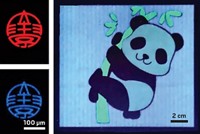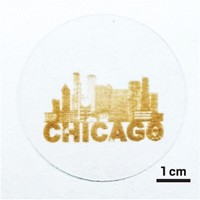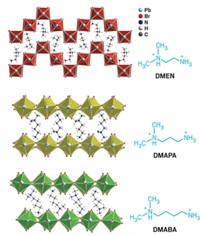Advertisement
Grab your lab coat. Let's get started
Welcome!
Welcome!
Create an account below to get 6 C&EN articles per month, receive newsletters and more - all free.
It seems this is your first time logging in online. Please enter the following information to continue.
As an ACS member you automatically get access to this site. All we need is few more details to create your reading experience.
Not you? Sign in with a different account.
Not you? Sign in with a different account.
ERROR 1
ERROR 1
ERROR 2
ERROR 2
ERROR 2
ERROR 2
ERROR 2
Password and Confirm password must match.
If you have an ACS member number, please enter it here so we can link this account to your membership. (optional)
ERROR 2
ACS values your privacy. By submitting your information, you are gaining access to C&EN and subscribing to our weekly newsletter. We use the information you provide to make your reading experience better, and we will never sell your data to third party members.
Materials
Colorless Dopants Help Optimize OLEDs
Fluorinated copper carboxylates allow researchers to prepare low-cost colorless hole-transport layers with improved transparency for lighting applications
by Stephen K. Ritter
January 13, 2014
| A version of this story appeared in
Volume 92, Issue 2
For several decades scientists have been dreaming of making inexpensive sheets of white organic light-emitting diodes (OLEDs) to serve as lighting tiles and wallpaper. Although some products have reached the market, they don’t yet have all the desired properties. One goal has been to develop a fully transparent hole-transport layer. Tungsten or molybdenum oxides and fluorinated tetracyanoquinodimethanes are dopant molecules typically used for this layer. But these colored compounds lead to undesired hues and reduce optical efficiency. A team led by Günter Schmid of the electronics company Siemens AG in Erlangen, Germany, and Marina A. Petrukhina of SUNY Albany have now devised fluorinated copper(I) carboxylates as colorless dopants for the hole-transport layer (Adv. Mater. 2013, DOI: 10.1002/adma.201303252). The dopant normally interacts with a polyaromatic amine electron hole conductor, generating delocalized holes that travel to phosphorescent or fluorescent dyes in an adjacent layer where the light is emitted. The team showed that copper(I) pentafluorobenzoate interacts sufficiently with the amine to stimulate hole transport but not so strongly as to induce charge transfer in the visible region to produce the unwanted color. The German lighting company Osram has used the new dopants to make OLED prototypes that perform as well as previous versions but with transparent hole-transport layers and higher power efficiency.





Join the conversation
Contact the reporter
Submit a Letter to the Editor for publication
Engage with us on Twitter